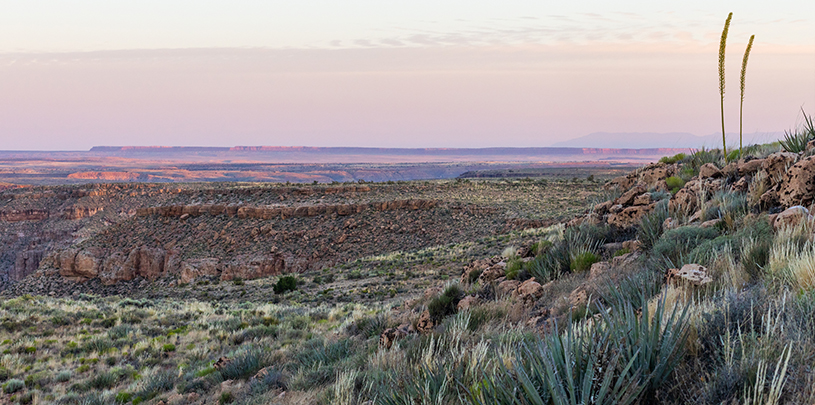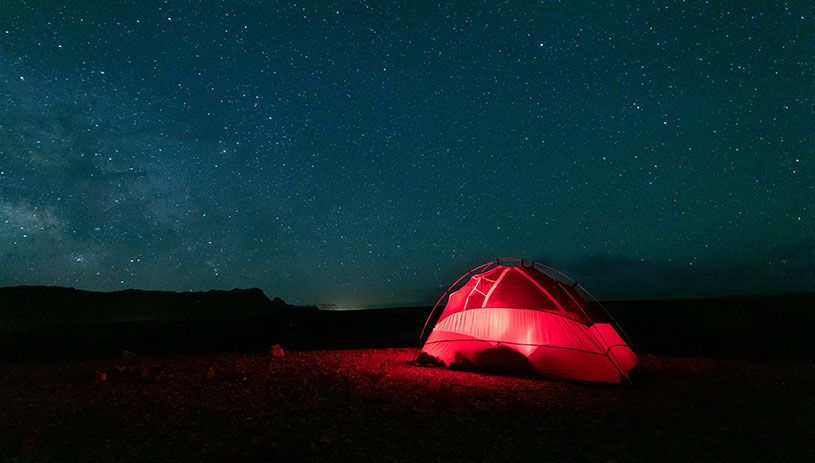
 by Amanda Podmore, Grand Canyon Director
by Amanda Podmore, Grand Canyon Director
April 11, 2024 marks the one-year anniversary of the tribal proposal for Baaj Nwaajvo I’tah Kukveni Grand Canyon National Monument.
A year ago, 13 tribes with strong cultural connections to the Grand Canyon asked President Biden to protect about a million acres of their ancestral homelands by designating a new national monument. And last summer, he granted their request.
Today, Baaj Nwaavjo I’tah Kukveni – Ancestral Footprints of the Grand Canyon National Monument is a testament to the decades of tireless advocacy by Southwest tribes, especially the Havasupai Tribe, to secure federal protections for their sacred lands and waters around the Grand Canyon.
The timeline of Baaj Nwaavjo I’tah Kukveni, from proposal to designation, was fast. But the tribes’ whirlwind four-month campaign represents only the most recent chapter within generations of Indigenous efforts to safeguard sacred sites, traditional hunting and gathering grounds, migration routes, and other culturally important sites around the Grand Canyon.
 President Biden signs the proclamation establishing Baaj Nwaavjo Itah Kukveni alongside tribal leaders. JIM ENOTE
President Biden signs the proclamation establishing Baaj Nwaavjo Itah Kukveni alongside tribal leaders. JIM ENOTE
For too long, Native leaders have been excluded from decisions about how to manage, protect, and steward their ancestral lands. That the Biden administration responded so quickly and earnestly to the tribes’ proposal is a step toward environmental justice in a landscape with a long history of American colonialism.
Native peoples have stewarded the Grand Canyon region since time immemorial, and their input in the management of Baaj Nwaavjo I’tah Kukveni is critical to the long-term health of its lands, waters, air, and inhabitants.
Since the monument was created, the 13 tribes that put forth the proposal have been organizing into the Grand Canyon Commission as set out in the monument proclamation, and individual tribes are signing agreements with land managers for future collaborative stewardship.
Looking ahead, we can expect the U.S. Forest Service and Bureau of Land Management, working alongside the Grand Canyon Commission and with input from the public, to develop a monument management plan.
 A starry night in Baaj Nwaavjo I'tah Kukveni. AMY S. MARTIN
A starry night in Baaj Nwaavjo I'tah Kukveni. AMY S. MARTIN
Monument management plans are documents that guide the protection of values like cultural sites, wildlife, scenic vistas, water supplies, natural quiet, and dark skies, and address uses like recreation, livestock grazing, motorized vehicles, and more.
The process to develop the Baaj Nwaavjo I’tah Kukveni management plan will take place over many months and allow the public to share their thoughts and concerns at multiple stages. We’ll keep you posted when opportunities arise.
In the meantime, take a moment to celebrate the vision and leadership of the Havasupai Tribe, Hopi Tribe, Hualapai Tribe, Kaibab Band of Paiute Indians, Las Vegas Tribe of Paiutes, Moapa Band of Paiute Indians, Paiute Indian Tribe of Utah, Shivwits Band of Paiutes, Navajo Nation, San Juan Southern Paiute Tribe, Yavapai-Apache Nation, Zuni Tribe, and Colorado River Indian Tribes, and their unwavering efforts to protect their homelands.
80% of Arizona voters support Baaj Nwaavjo I'tah Kukveni National Monument, according to a new poll.
Read MoreThe Colorado River below Glen Canyon Dam is heating up. Find out why.
Read MoreGroundwater pumping at a uranium mine near the Grand Canyon will affect the canyon's springs, scientists says.
Read More